Only a handful of countries go as hard as Spain when it comes to partying, and of all its cities, Madrid deserves an honorable mention for being the epicenter of Spanish nightlife. And I’m not exaggerating; ask any Spaniard; Madrid’s nightlife is le-gen-da-ry. Here’s a list of the top areas to stay in Madrid for nightlife, carefully selected to match your unique clubbing style. Make sure to check out our Berlin, Amsterdam, Paris, and London guides.
Accommodation Options in Madrid
Us Madrileños are famed for being an energetic bunch who defy schedules and, apparently, the very concept of time, so keeping up with us is not easy. In Madrid, the norm is having dinner around 10 p.m., then going for drinks at around midnight, only arriving at the club between two and three in the morning, and then returning home at closing time. That is, of course, unless we find an afterparty to go to.
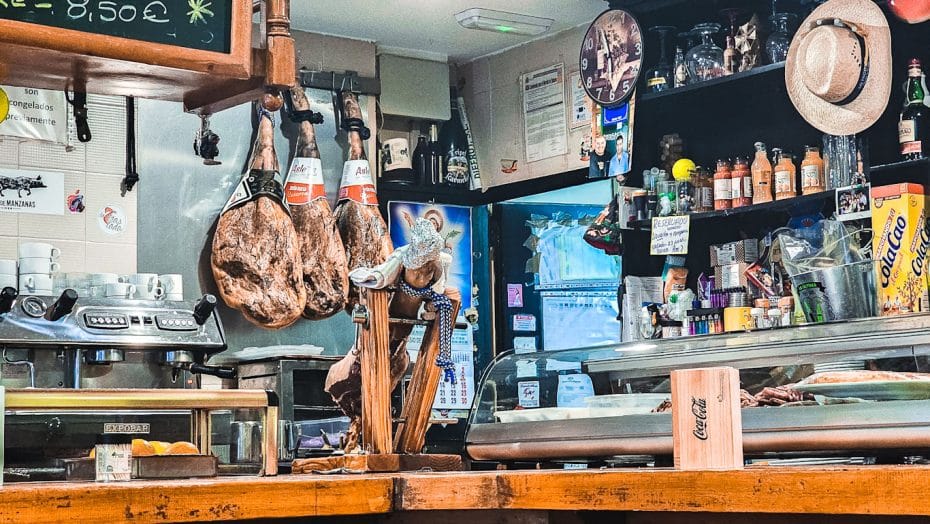
That is why, if you’re planning to visit the Spanish capital for its night scene, choosing the best area to stay in Madrid for nightlife is as important as understanding that getting to the nightclub early is almost a capital sin. But that’s basically the only rule. Madrileños are known for their relaxed attitudes, openness, and friendly disposition. It’s a very welcoming city to visitors. It does not matter where you’re from, who you love, or your style.
It should go without saying, but staying near the clubs you want to visit will save time and money because A. taxis can be expensive, B. public transport is not as frequent at night, and C. Madrid is a great city for pedestrians and a safe place day and night.
There are certain things you should consider while choosing the best areas to stay in Madrid, but it all comes down to your particular preferences and budget. If the varied alternative scene of Madrid catches your attention, areas like Malasaña are right up your alley. On the other hand, Chueca is the place to go for gay clubs and LGBT-friendly venues and is also a great choice for accommodation in Madrid.
What’s the Best Area to Stay in Madrid for Nightlife?
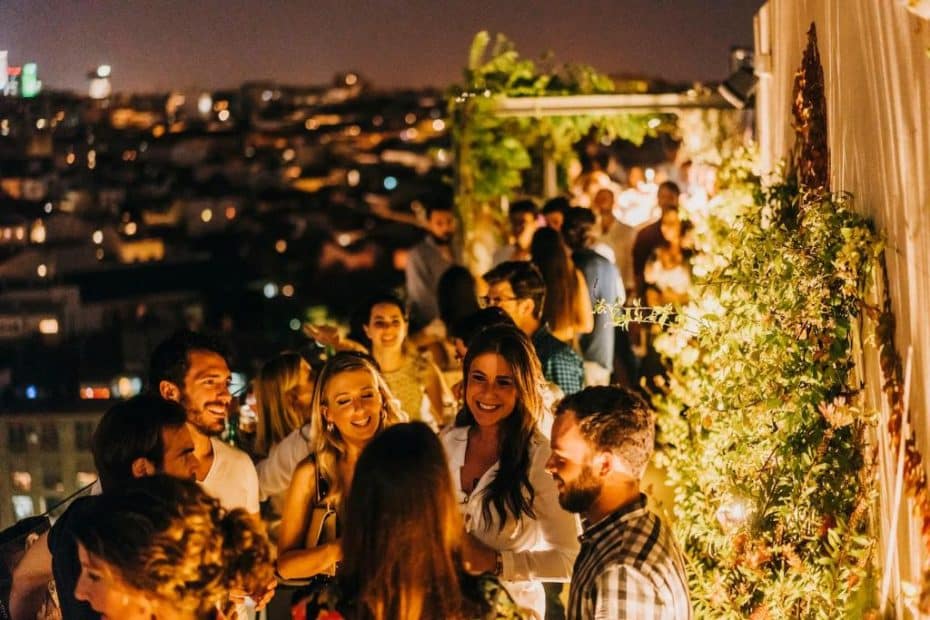
The best area to stay in Madrid for nightlife is Centro, particularly around the famous Gran Vía. This vibrant area is home to numerous bars, clubs, and entertainment venues that stay open late into the night. Whether you enjoy trendy nightclubs or cozy bars, Gran Vía and its surroundings offer endless options for a memorable nightlife experience.
Find available accommodation in Madrid Centro District.
Best Hotels in Madrid’s Distrito Centro
- The best five-star hotel: Gran Hotel Inglés
- The best four-star hotel: Iberostar Las Letras Gran Via
- The best three-star hotel: Hotel Regina
- The best budget hotel: Ibis Madrid Centro
- The best B&B: BNBHolder Boutique SOL
- The best hostel: Sungate ONE
- The best serviced apartments: Arenal Suites Puerta del Sol
Nightlife in Madrid: Best Quarters to Consider
As we mentioned before, the best nightlife in Madrid is in Centro and around Gran Vía. That said, Distrito Centro is massive and offers different scenes. Additionally, other areas outside Centro, such as Salamanca, are great options. Here are some of the liveliest barrios in and out of Central Madrid:
- Malasaña is known for its bohemian and alternative vibe. It’s a hotspot for trendy bars, vintage shops, and eclectic nightlife. It’s popular among young people and has a super lively night atmosphere.
- Sol & Los Austrias offers a more traditional Madrid nightlife experience. With its historic buildings and famous squares like Plaza Mayor, it’s great for enjoying classic bars and experiencing the city’s vibrant energy.
- Barrio de las Letras has historically been home to some of Spain’s most famous writers, It offers an artistic flair and is filled with tapas bars, cozy cafes, and intimate live music venues.
- Chueca is known as Madrid’s LGBTQ+ district. It is famous for its inclusive and vibrant nightlife, which is packed with stylish clubs, trendy bars, and fabulous drag shows. It’s a welcoming space and the best area during the Madrid Pride celebrations.
- Lavapiés is known for its multicultural atmosphere and artsy nightlife scene. It features numerous indie bars, art spaces, and ethnic restaurants. It’s ideal for those who love to delve into different cultures and enjoy budget nights out.
- Salamanca is an upscale option for nightlife in Madrid. It offers chic cocktail bars and exclusive clubs. It’s perfect for sophistication, luxury, and partying with celebrities.
- Chamberí is characterized by traditional taverns and contemporary bars. It’s a great choice for anyone looking to mingle in an unpretentious yet lively environment.
Where to Stay in Madrid for Nightlife: Best Areas
1. Malasaña
Madrid’s best nightlife and Food barrio in Madrid
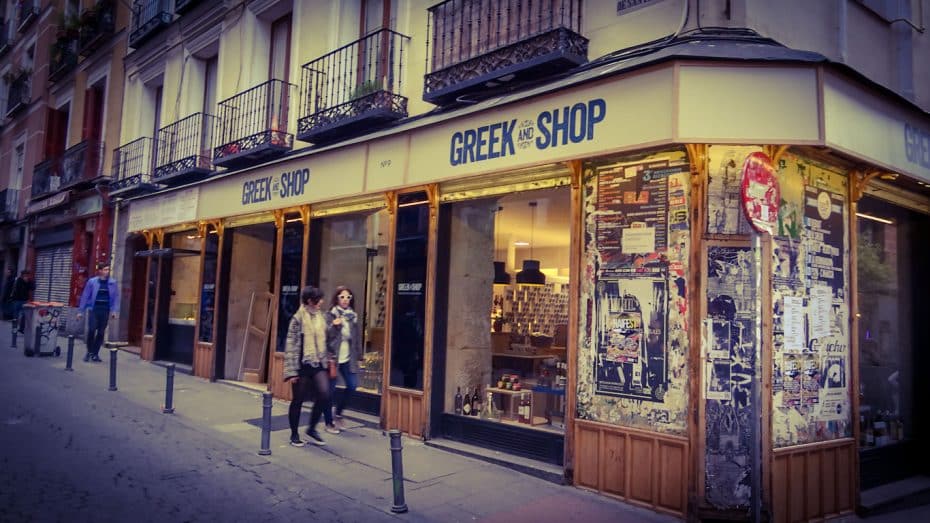
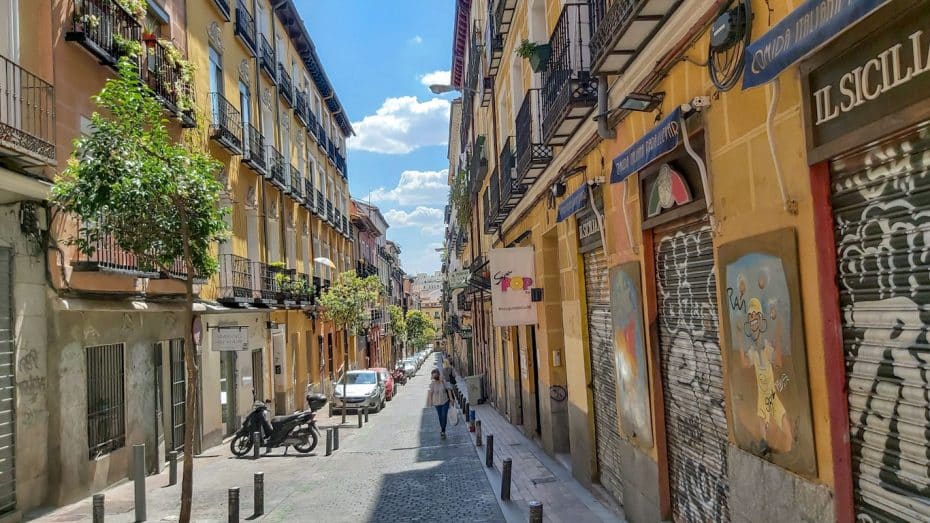
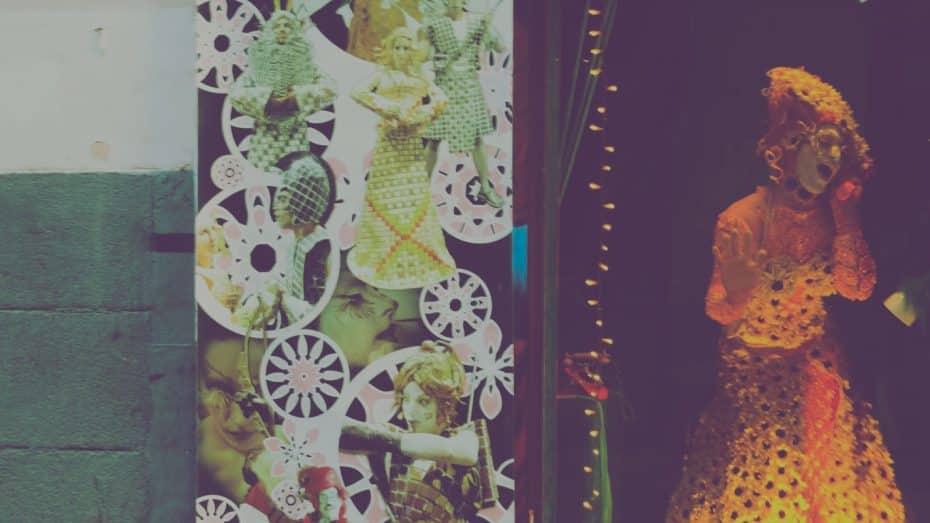
Malasaña is a lively neighborhood known for its alternative culture and bohemian vibe. It’s filled with bars, live music venues, and eclectic shops.
Malasaña is an unofficial historical neighborhood of Madrid with varying limits depending on who you ask. For clarity, we will use the local-preferred term”Malasaña” to refer to the Official Ayuntamiento-approved (but rarely used beyond official statements) “Universidad.” Universidad is a cluster of smaller historic neighborhoods that include Conde Duque, Barrio de las Maravillas, Malasaña itself, Pozas, Triball, Dos de Mayo, and a few smaller bits integrated into the larger current Centro sub-district.
Any building located north of Gran Vía and Plaza España, west of Calle Fuencarral, south of Alejandro Aguilera and Carranza streets, and West of Calle Princesa is considered a part of Universidad and will therefore be referred to as Malasaña on this article. Don’t come at us.
Malasaña offers important cultural heritage and an electric nightlife scene in Centro’s northwestern corner. The area became renowned in the late 1970s and early 1980s as the cradle of La Movida Madrileña, a social and cultural movement that emerged following the death of dictator Francisco Franco. This era witnessed the rise of influential figures such as filmmaker Pedro Almodóvar and the music group Mecano, who championed freedom of expression and redefined Spain’s cultural landscape.
While it has definitely seen gentrification since its humble beginnings, Malasaña has preserved much of its bohemian and artistic spirit, making it a magnet for creative minds and different urban subcultures. The district seamlessly blends posh restaurants with hipster bars and music venues, creating a perfect setting for anyone seeking to experience Madrid’s vibrant nightlife.
One of Malasaña’s standout features is its many attractions. Plaza del Dos de Mayo is the neighborhood’s main square, surrounded by lively terraces and cafes.
Some notable nightlife spots include Sala Maravillas (Calle de San Vicente Ferrer, 33) known for its eclectic live music offerings, Tupperware Club (Corredera Alta de San Pablo, 26) celebrated for its retro vibe and indie music, and Espit Chupitos (Calle de San Vicente Ferrer, 39), a bar dedicated almost entirely to shots, and Republik (Calle de la Puebla 6), known for eclectic music.
Transportation options around Malasaña are excellent. The neighborhood is well-served by several metro lines, including lines 1, 2, 3, 4, and 10. Stations such as Tribunal, Noviciado, Plaza España, and Bilbao are within a ten-minute walk from any part of the district. These connections make it easy to navigate to and from other parts of Madrid.
Regarding accommodation choices, Malasaña offers various options. From chic boutique hotels to budget-friendly hostels, plenty of places to stay accommodate different budgets.
Want to learn more about Malasaña? Check these out…
Best Hotels in Malasaña for Partying in Madrid
2. Sol, La Latina and Madrid de los Austrias
The most traditional area in Distrito Centro
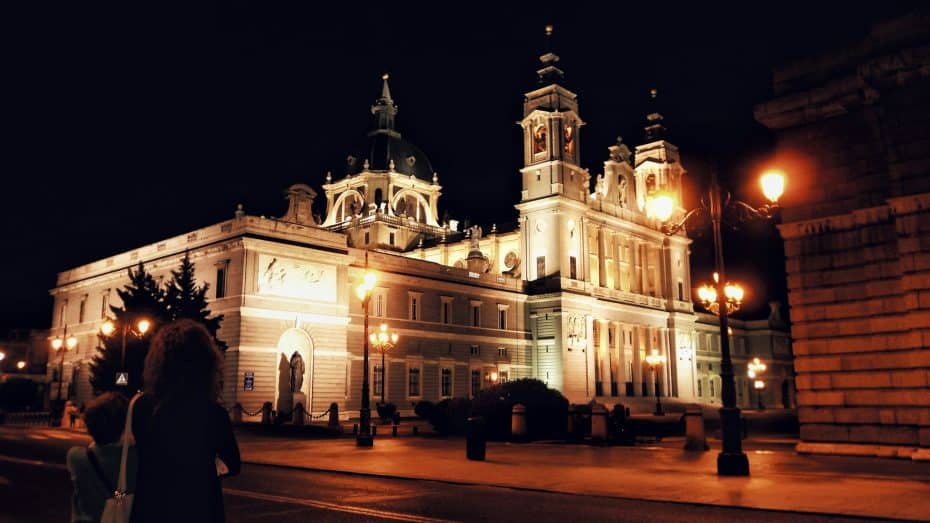
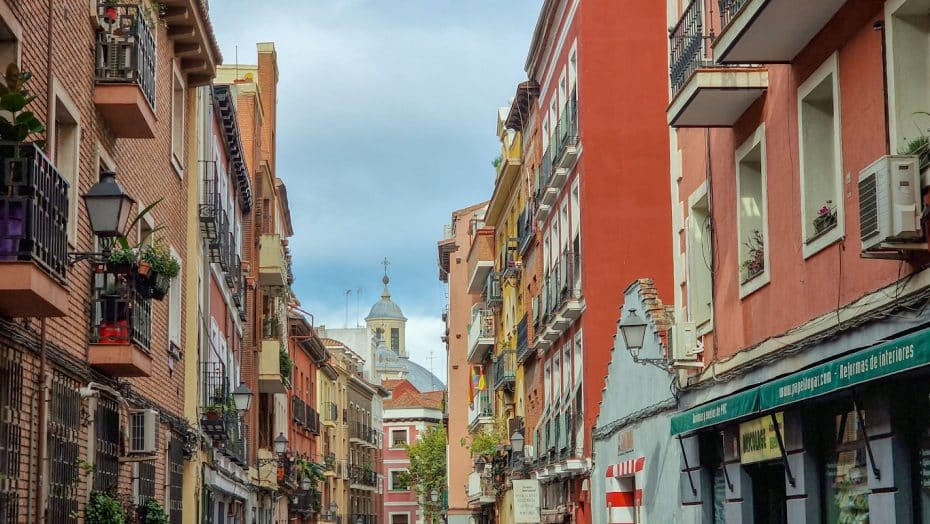
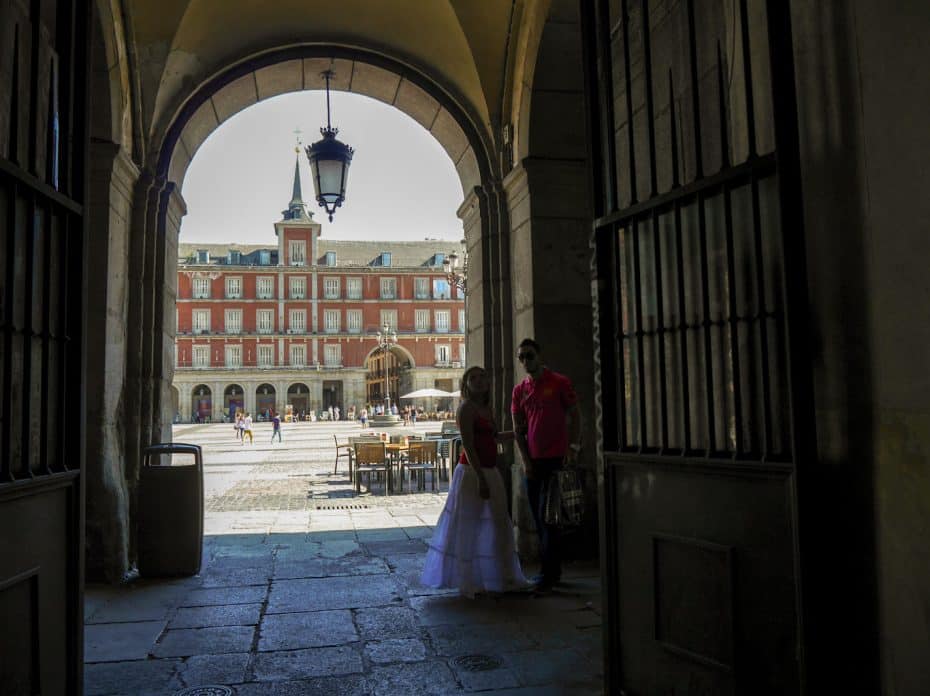
Sol, Los Austrias and Palacio are the bustling central area of Madrid, home to many traditional tapas bars, clubs, and historic taverns
Located in the centermost area of Old Town Madrid, Sol is a prominent nightlife destination. Centered around the famous Puerta del Sol, this district has historically been a civic and social hub. The square has played a pivotal role in many key events, such as the proclamation of the Second Spanish Republic in 1931. Today, it remains a bustling area well into the night.
Tapas enthusiasts might enjoy Casa Labra (Calle de Tetuán, 12), known for its traditional croquettes, and Taberna Malaspina (Calle de Cádiz, 9), which offers a lively environment. For those in live music, La Coquette Blues Bar (Calle Hileras 14) has theme nights; Kapital (Calle de Atocha, 125) is famous for its seven floors of different music styles, from hip hop to house.
Situated slightly southwest of Sol is La Latina. This historic area boasts a distinctly local flavor with a history reflected in its narrow streets and traditional architecture. Known for being one of the oldest quarters of Madrid, La Latina was built on the site of a medieval Islamic fort.
The nightlife in La Latina is equally lively but has a more laid-back vibe. Here you will find tapas bars like “El Viajero” (Plaza de la Cebada, 11), which has a famous rooftop terrace offering stunning views of Madrid’s skyline; “Los Caracoles” (Calle de Toledo, 106), known for its traditional snails; and “La Tía Juana” (C. de Atocha, 74), reputed for its shots.
Want to learn more about Sol & Los Autrias? Check these out…
Best Hotels in Sol for Partying in Madrid
3. Barrio de las Letras
The best area to mix culture and nightlife
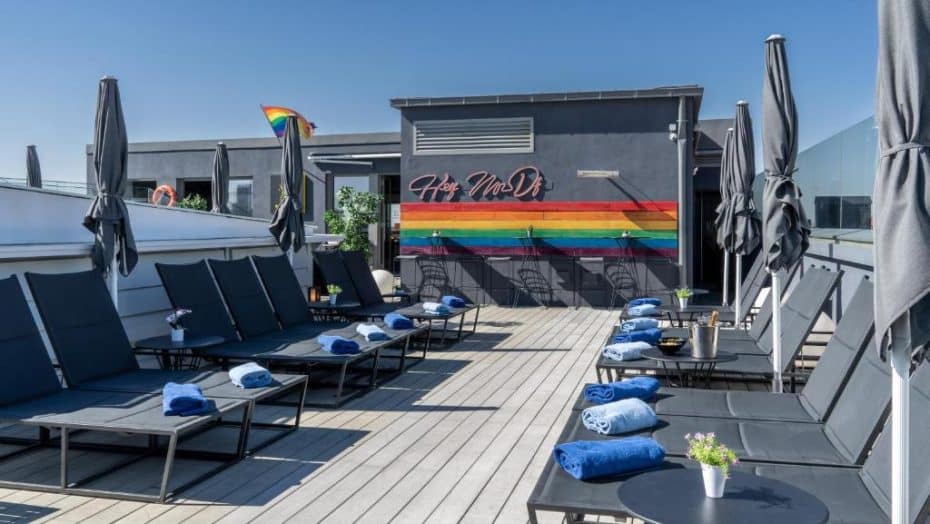
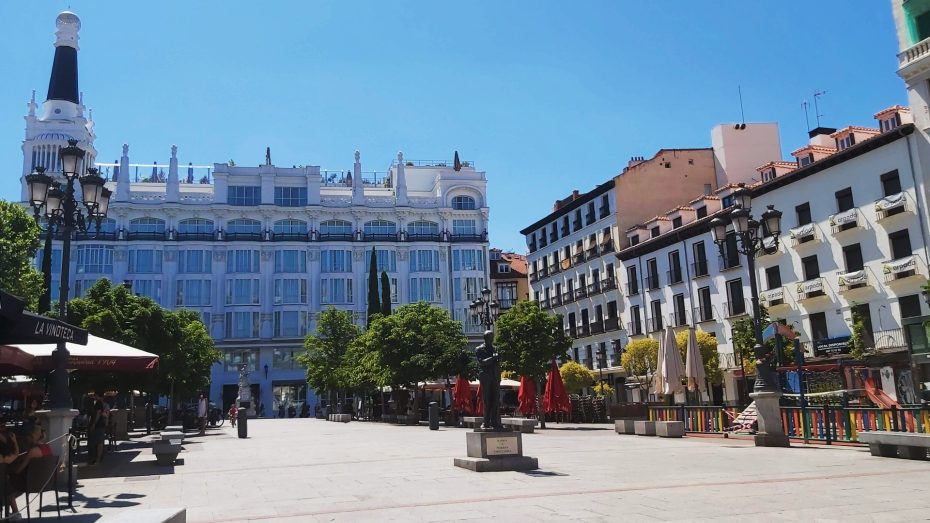
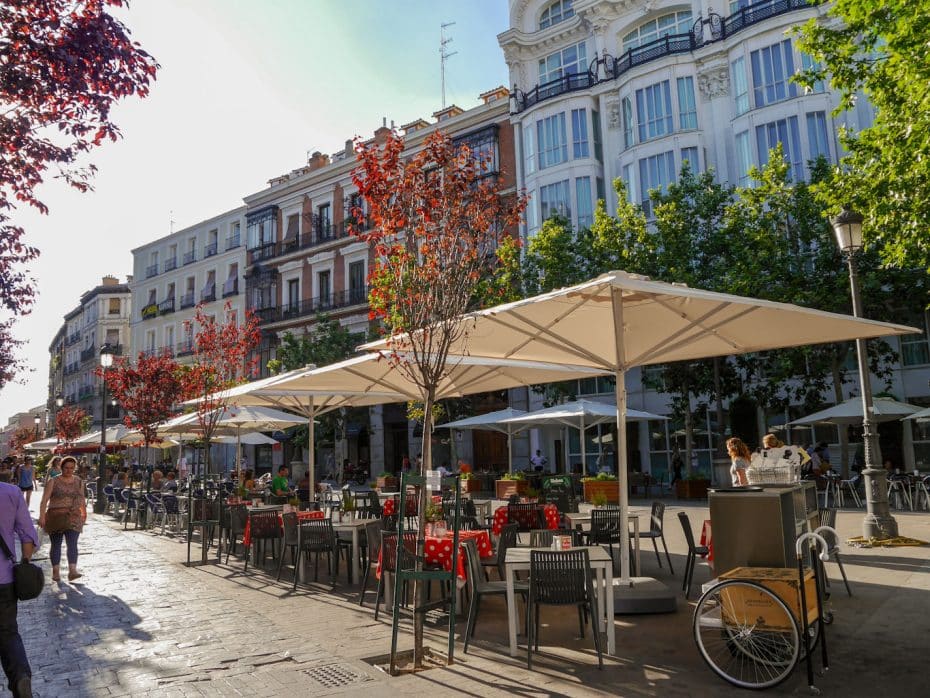
Barrio de las Letras has a historic flair with a modern twist, as it was once home to many famous writers.
Barrio de Las Letras, another unofficial Madrid barrio, is part of Cortes, a vibrant neighborhood in Madrid’s central area. It sits between the Paseo del Prado and Calle de Atocha, making it easily accessible and well-connected. Historically, the area has been home to some of Spain’s most celebrated writers, such as Cervantes and Lope de Vega. In fact, its name could be roughly translated as “Literary Quarter.”
For nightlife enthusiasts, Barrio de Las Letras offers literally (pun intended) hundreds of options. The area is regarded as the best area in Madrid for tapas and tardeo (the Spanish custom of having an aperitif or beer before going to dinner).
Regarding tapas bars, “Taberna La Dolores” (Plaza Jesús, 4) stands out for its traditional tapas and authentic atmosphere. Another favorite is “Casa González” (Calle del León, 12), known for its extensive selection of cheeses and Iberian ham.
Cocktail lovers will find “LoBbyto Cocktail Bar” (Calle Echegaray 8) an excellent spot for signature drinks with a sophisticated twist. Similarly, the “Bar Cock” (Calle de la Reina, 16) provides a classic cocktail experience in an elegant setting dating back to the early 20th century.
Nightclubs in Cortes are equally renowned. “Teatro Kapital” (Calle de Atocha, 125) is a multi-story club offering different music genres on each floor, making it a go-to spot if you like variety. For a more intimate venue, “Teatro Eslava” (Calle del Arenal, 11) provides live music performances and traditional club nights.
Transportation in this neighborhood is seamless, with the Antón Martín Metro Station (Line 1) providing easy access. The proximity to Atocha train station further connects the area to various parts of Madrid and beyond, thanks to Line 1 Cercanías and access to Regional and Long-Distance services, including high-speed trains.
Want to learn more about Las Letras? Check these out…
Best Hotels in Las Letras for Partying in Madrid
4. Chueca
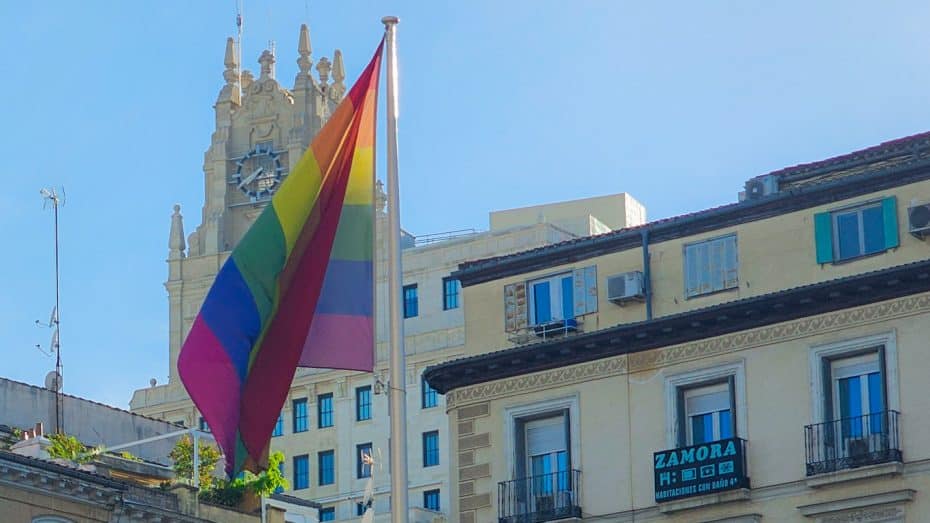
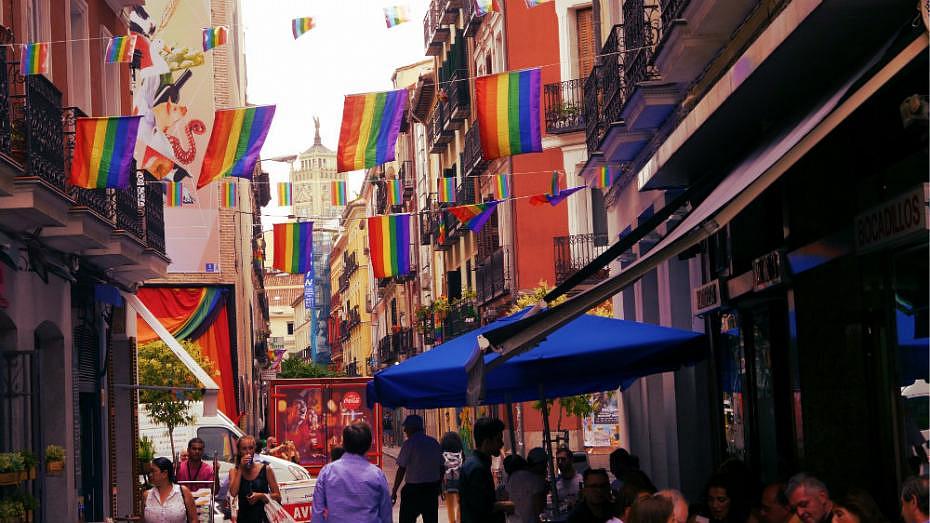
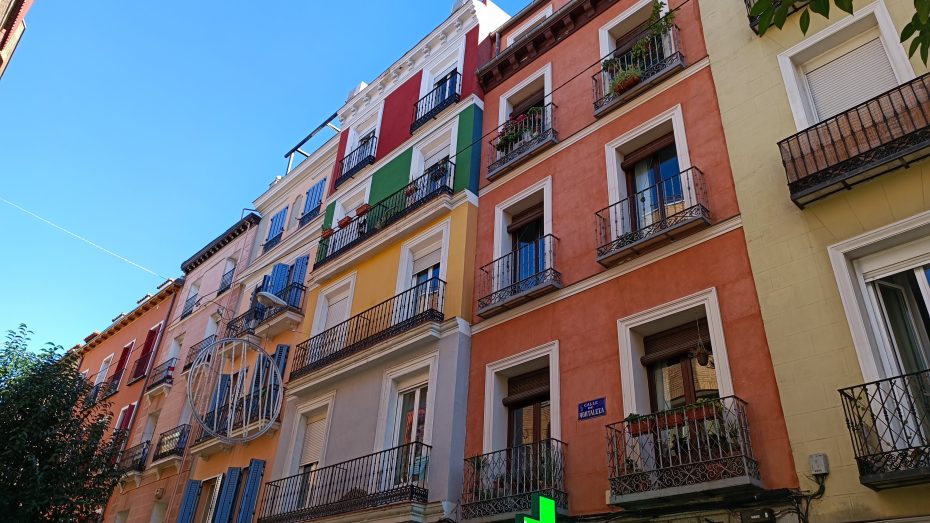
Chueca is the epicenter of Madrid’s LGBTQ+ scene and offers an inclusive atmosphere.
Chueca, located adjacent to Malasaña and Gran Vía, is the city’s quintessential gay district. Just like Malasaña, Chueca is an unofficial historic quarter. Together with Las Salesas and Barceló, it forms the official Barrio de Justicia, though I’ve never used the name Justicia for the area in casual conversation, and I LIVE THERE!
This vibrant area, teeming with life, offers various nightlife options that cater to the LGBTQ+ community. Chueca’s central location and connectivity through its own metro station make it easily accessible from other parts of Madrid. During the Orgullo de Madrid (or MADO), the city’s Gay Pride celebration runs from the last week of June to the first week of July, Chueca becomes even more dynamic. However, hotel prices can surge during this period.
The neighborhood’s history is rooted in transformation. Originally a working-class district, it began to change in the 1980s following Spain’s return to democracy. Chueca quickly developed into a haven for the LGBTQ+ community, fostering acceptance and vibrancy that now define its streets and venues.
Madrid’s (and Spain’s) main gayborhood core is centered around Plaza de Chueca, but other streets and squares are just as queer. Great examples include Plaza de Zerolo (named after a prominent PSOE (Spanish Socialist Workers’ Party) councilor and LGBTQ+ rights activist.) And several streets, such as Pelayo, Barbieri, San Bartolomé, and Hortaleza.
Chueca offers a multitude of bars and clubs that line the sidewalks, each welcoming members of the LGBTQ+ community with open arms every night of the week. Some noteworthy bars include Black & White (Calle de la Libertad, 34), a venue known for its drag shows and karaoke nights; LL Bar (Calle de Pelayo, 11), which features live performances and themed parties; and Why Not? (Calle de San Bartolomé, 7), celebrated for its eclectic music selection, ranging from pop hits to electronic beats.
For those who prefer dancing until dawn, Chueca boasts several dance clubs, such as Delirio (Calle de la Libertad, 28), where guests can revel in pop music under glittering disco balls, and Studio 54 (Calle de Pelayo, 56), which plays high-energy dance hits reminiscent of its namesake’s heyday.
In addition to its nighttime attractions, Chueca is dotted with modern boutique hotels and upscale accommodations suitable for various budgets. However, booking well in advance is advisable if planning your visit during the bustling Pride season.
Transportation around Chueca is convenient due to its proximity to various metro lines. Chueca Station on Line 5 provides quick access to Gran Vía and other areas. Other nearby stations include Tribunal (Lines 1 and 10), Gran Vía (Lines 1 and 5), Bilbao (Lines 1 and 4), and Alonso Martínez (Lines 5 and 10)
Want to learn more about Chueca? Check these out…
Best Hotels in Chueca for Partying in Madrid
5. Lavapiés & Embajadores
The best area for alternative bars & budget-friendly nightlife
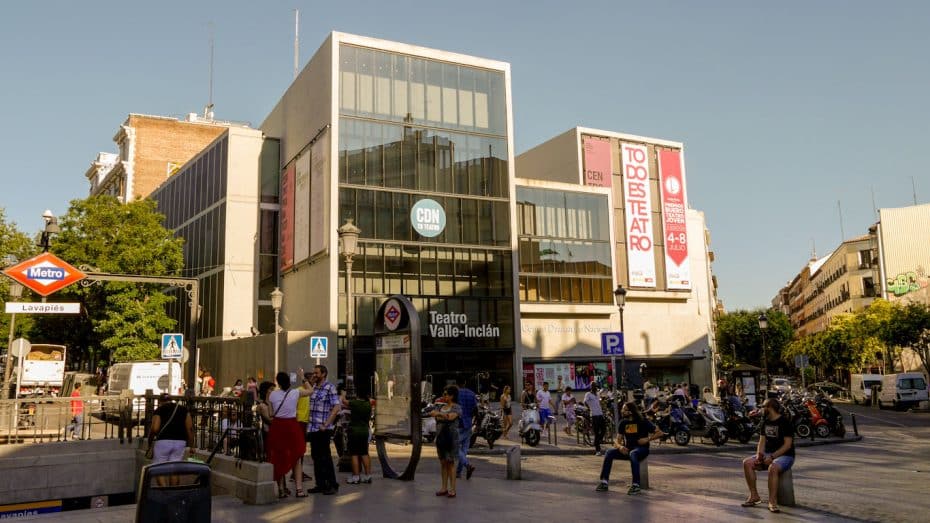
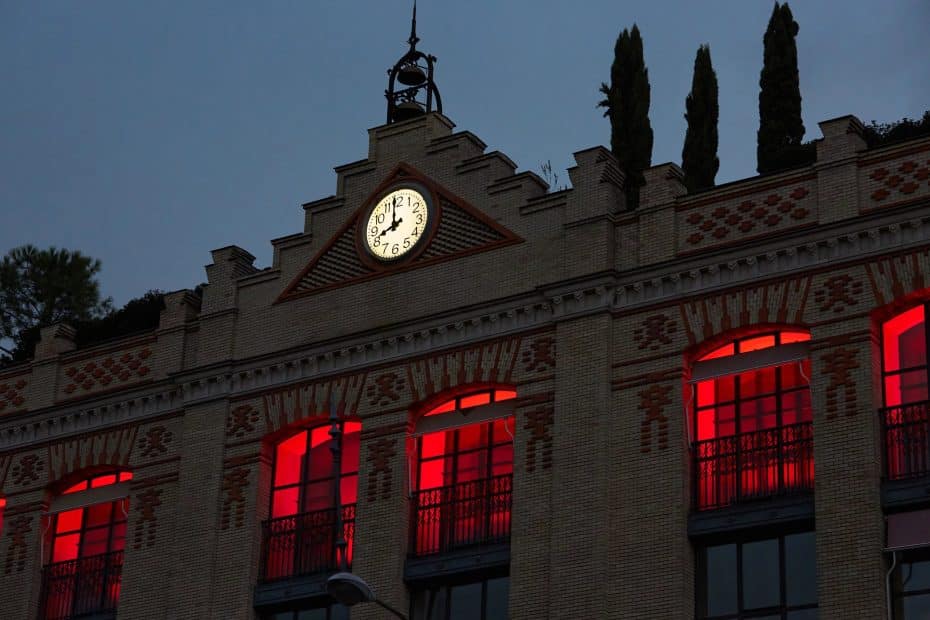
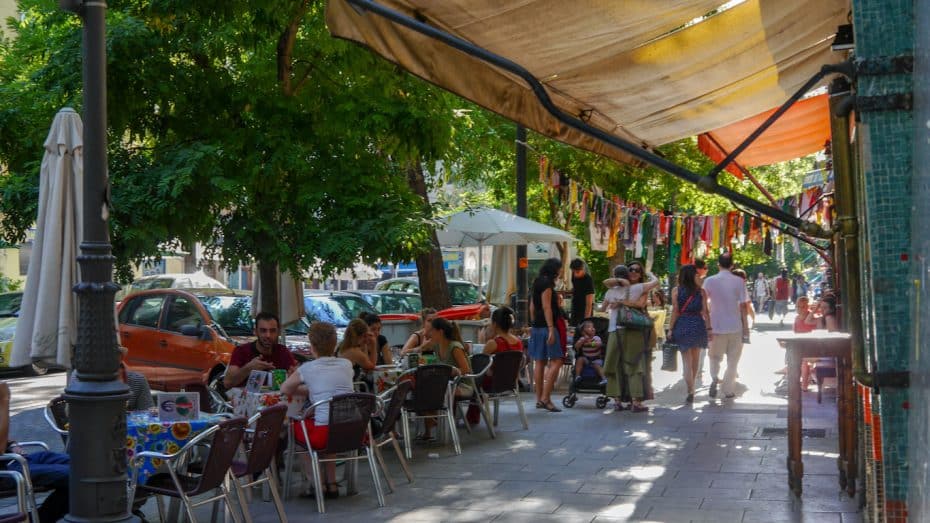
Lavapiés & Embajadores are multicultural neighborhoods known for their eclectic nightlife.
One of the best areas to stay in Madrid for nightlife is Lavapiés, a vibrant and diverse neighborhood south of Sol with a unique atmosphere and bustling nightlife. Located in the southeastern part of Distrito Centro, Lavapiés was originally a Jewish quarter until their expulsion in the late 15th century. The area has since become a melting pot of cultures and nationalities, creating an eclectic mix of shops, restaurants, and entertainment options.
Lavapiés is also noteworthy for attractions such as El Rastro – Madrid’s most famous flea market held every Sunday on Ribera de Curtidores – which draws locals and tourists, La Casa Encendida (Rda. de Valencia, 2), a cultural center that hosts exhibitions and workshops; La Escalera de Jacob (C. de Lavapiés, 9), a popular theater showcasing contemporary works; and Teatro Valle-Inclán (Pl. de Ana Diosdado, s/n), home to the Spanish National Drama Center. In addition to these venues, you can also explore San Fernando Market (C. de Embajadores, 41), an indoor food market that offers a wide variety of delicious local and international cuisine.
For art enthusiasts, the Museo Nacional Centro de Arte Reina Sofía, part of the Golden Triangle of Art, houses an exceptional modern and contemporary Spanish art collection. The museum’s highlights include works by Salvador Dalí and Pablo Picasso’s Guernica.
Nightlife thrives in Lavapiés, and there are numerous options to choose from. Visitors can enjoy tapas bars like Taberna Alambique (Calle de la Torrecilla del Leal, 22) and Tabernas El Sur (Calle Torrecilla Del Leal, 12) or unwind in bars like La Noche Boca Arriba (Calle Salitre 30), and El Juglar (Calle de Lavapiés 37). For those who enjoy Jazz, Café El Despertar (Calle de la Torrecilla del Leal 18) is popular in the area.
Transportation within and around Lavapiés is quite convenient. The area has several metro stations: Lavapiés (Line 3), Tirso de Molina (Line 1), and Embajadores (Line 3 and Cercanías trains). Numerous bus lines also pass through the neighborhood.
As for accommodation, Lavapiés offers a range of hotels to suit different budgets and preferences. Lavapiés and neighboring Embajadores are probably the cheapest areas to stay within the coveted Distrito Centro.
In conclusion, Lavapiés is an ideal location for those who want to experience Madrid’s nightlife while enjoying its rich history, diverse cultural offerings, and convenient transportation options.
Want to learn more about Lavapiés & Embajadores? Check these out…
Best Hotels in Lavapiés for Partying in Madrid
6. Salamanca
Party like (or even with) Cristiano Ronaldo
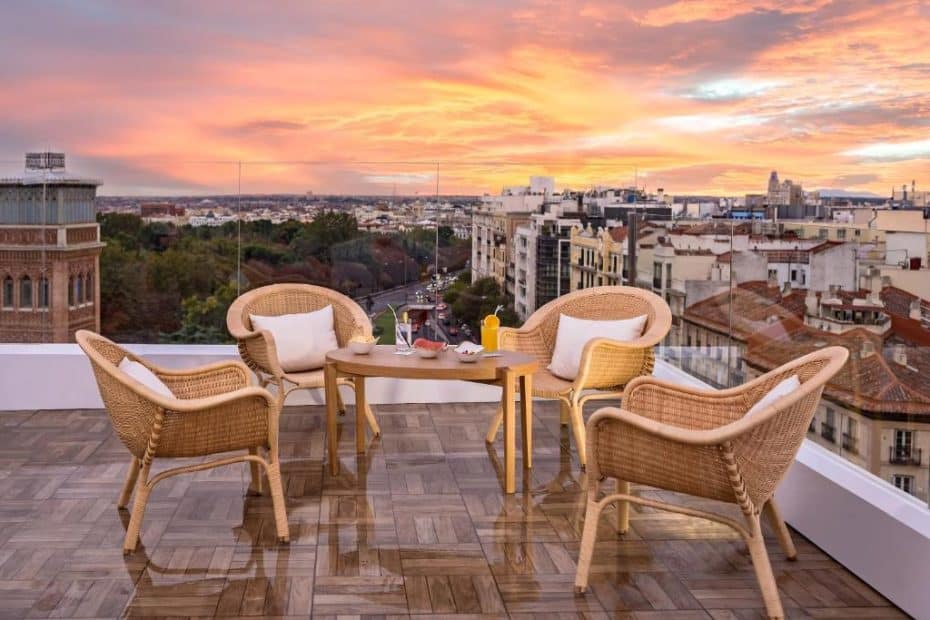
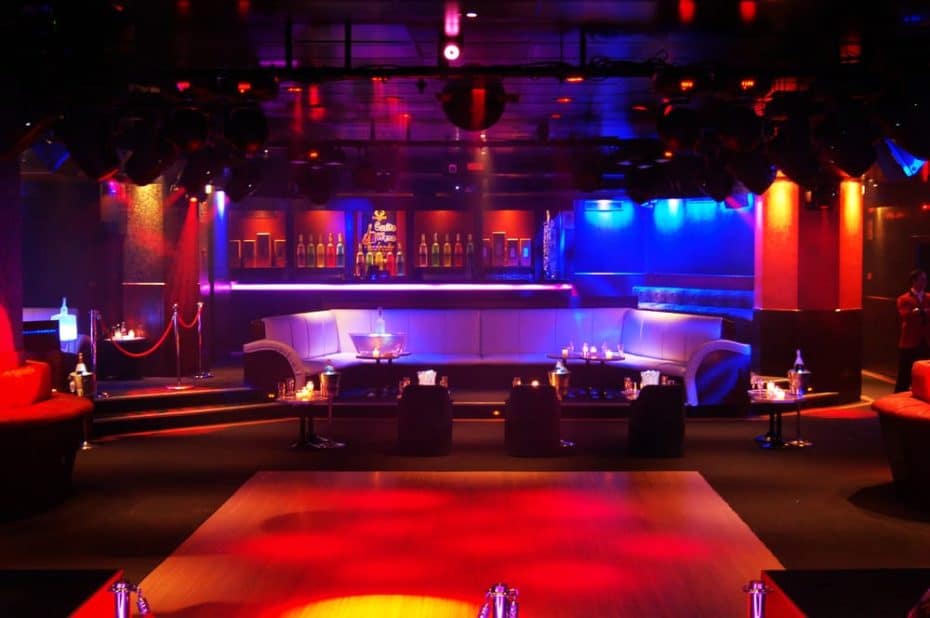
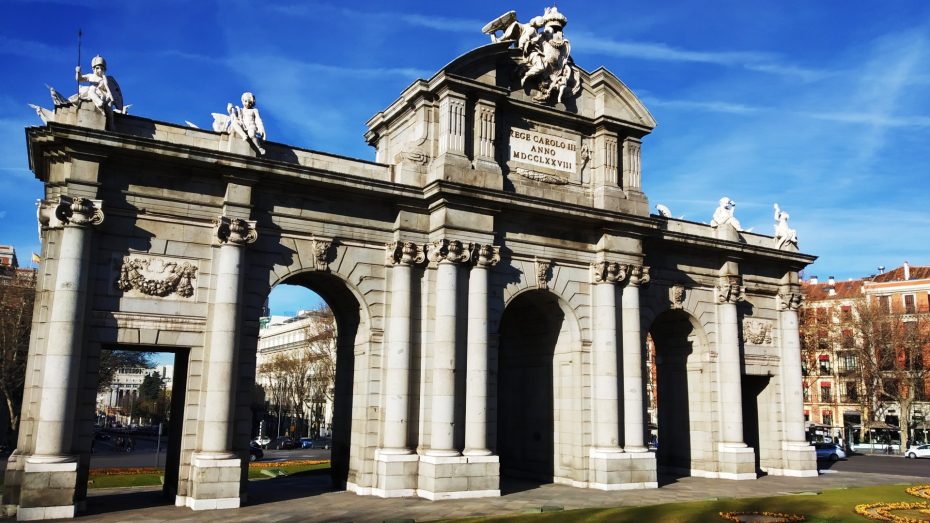
Salamanca is an upscale area where you can enjoy refined nightlife options fit (sometimes litterally) for the Royalty.
Salamanca is one of Madrid’s most affluent and sophisticated neighborhoods, located northeast of the city center. Its creation dates back to the mid-19th century, when José de Salamanca, a Marquis and Spanish politician, envisioned and developed it as an aristocratic residential area. Broad tree-lined avenues, stylish buildings, and several vibrant commercial zones define this district’s layout.
For nightlife enthusiasts, Distrito de Salamanca specifically offers an upscale and energetic atmosphere suitable for a night out on the town. It is unique due to its blend of luxury and traditional charm.
For nightlife enthusiasts, Distrito de Salamanca offers many options. El Velázquez 17 (Calle Velázquez, 17) presents a refined dining experience among its prestigious restaurants and gastro bars. The Jungle Jazz Club (Calle Jorge Juan, 31) combines gastronomy with live jazz performances, offering an incomparable ambiance. Ramses (Plaza de la Independencia 4), near Puerta de Alcalá, fuses exquisite dining with an energetic nightlife vibe.
CarmenBar (Calle Recoletos, 8) is renowned for its traditional Spanish small plates if you prefer tapas. Cocktail aficionados can enjoy creative concoctions at Bar El Despiste (Calle Hermosilla 101).
For those wanting to dance the night away, Goya Social Club (Calle Goya 43) is a local favorite among electronic music lovers. Meanwhile, Gabana Club (Velázquez 6) offers an upscale atmosphere and celebrity sightings.
An excellent transportation network reaches Distrito de Salamanca’s every corner. Multiple metro stations, such as Serrano (Line 4), Núñez de Balboa (Lines 5 and 9), and Velázquez (Line 4), serve the area.
In terms of accommodation, Distrito de Salamanca boasts luxurious properties catering to the upper échelons of society.
Want to learn more about Salamanca, Madrid? Check these out…
Best Hotels in Salamanca for Partying in Madrid
7. Chamberí
Tranquil but Bustling at the same time
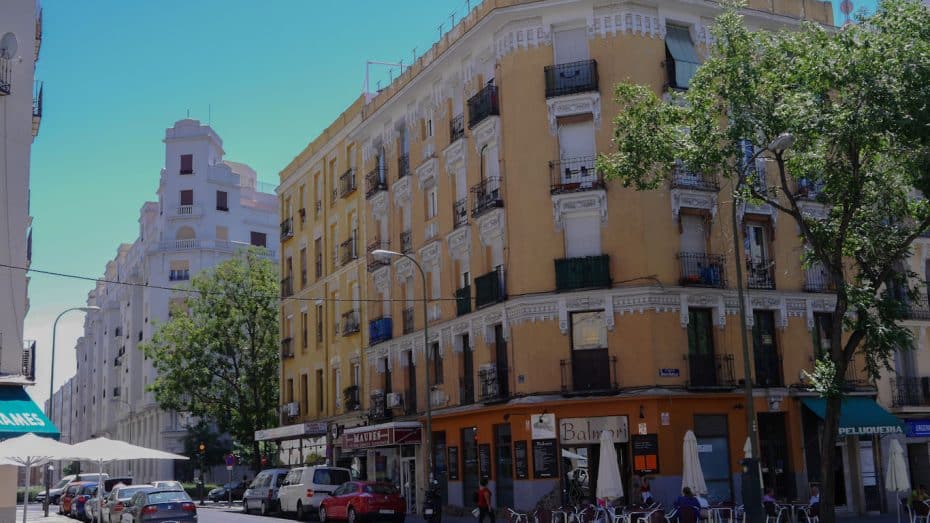
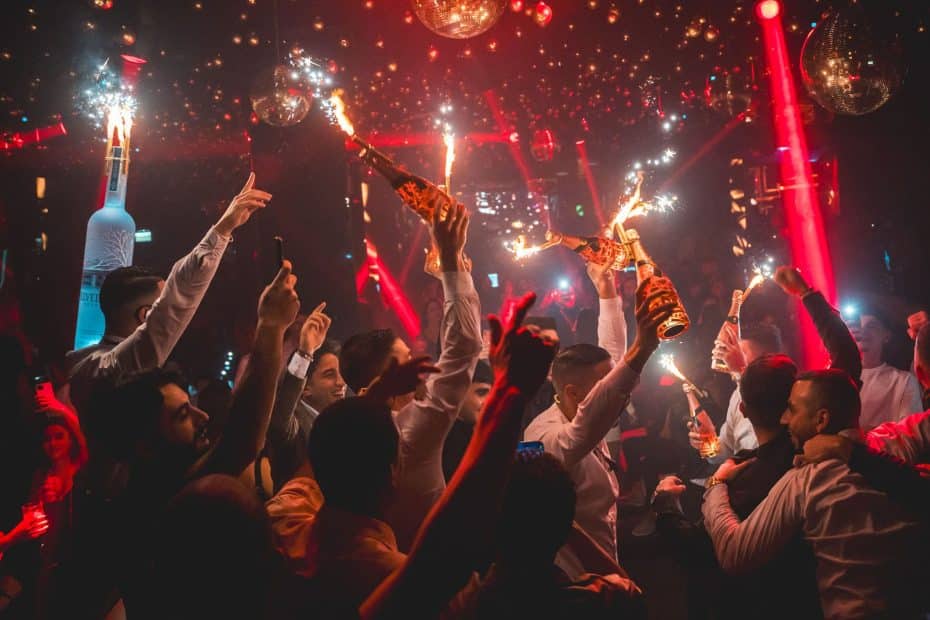
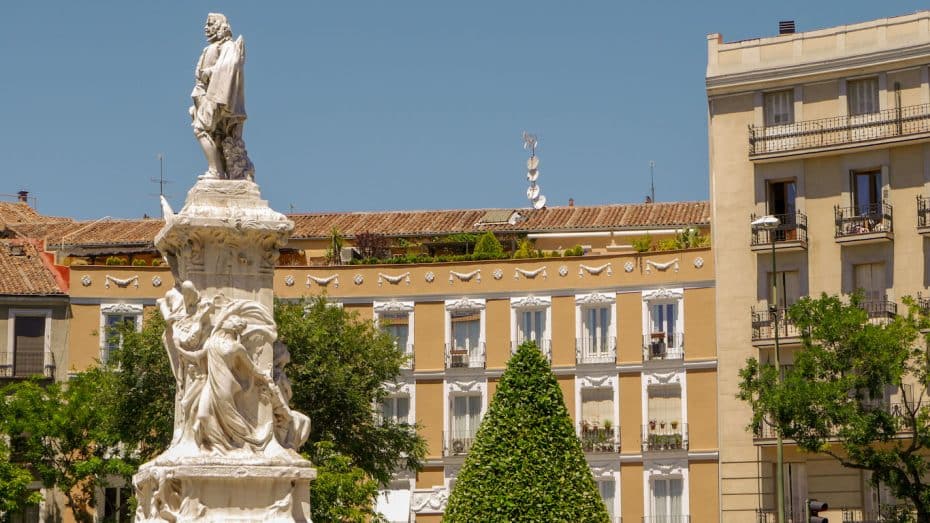
Chamberí offers a more laid-back nightlife experience with a focus on intimate bars and traditional taverns.
Chamberí is a vibrant neighborhood located in the center-north of Madrid. Its nightlife epicenter is Calle Cardenal Cisneros.
It also includes notable landmarks like the Plaza de Olavide. This area is known for its architectural masterpieces from the 19th century, which reflect a blend of aristocratic ambiance with bohemian twists.
While the district is not as upscale as Salamanca, it encapsulates an old-world charm with its residential feel and tree-lined streets while maintaining a bustling nightlife scene that caters to diverse tastes.
One of Chamberí’s most appealing features is its various nightlife options, particularly on Calle Cardenal Cisneros and around. Here, you can enjoy a range of culinary experiences from upscale restaurants to traditional tapas bars.
This mix offers something for every palate, from traditional Spanish cuisine to contemporary fusion dishes. This varied culinary scene is complemented by several dance clubs like the uberfamous Opium Club (Calle de José Abascal, 19), Sala Clamores (Calle de Alburquerque, 2), and Malaba Club (Calle del Cardenal Cisneros 32). These hotspots provide an eclectic mix of music genres and atmospheres, attracting a diverse crowd eager to dance the night away.
For those interested in LGBTQ-friendly spots, Kluster (Calle de Covarrubias, 9) stands out as a prominent club. Additionally, the terraces around Plaza de Olavide offer a more laid-back vibe where one can enjoy drinks under the stars amid pedestrian-friendly surroundings.
Transportation in Chamberí is highly convenient, with multiple options to navigate the city easily. The area is serviced by several metro stations, such as Iglesia (Line 1), Bilbao (Lines 1 and 4), and Alonso Cano (Line 7).
The accommodations in Chamberí mainly cater to an upscale-ish clientele, and options range from boutique hotels to modern establishments.
Want to learn more about Chamberí, Madrid? Check these out…
Best Hotels in Chamberí for Partying in Madrid
8. AZCA & North Madrid
Perfect for mixing business and pleasure
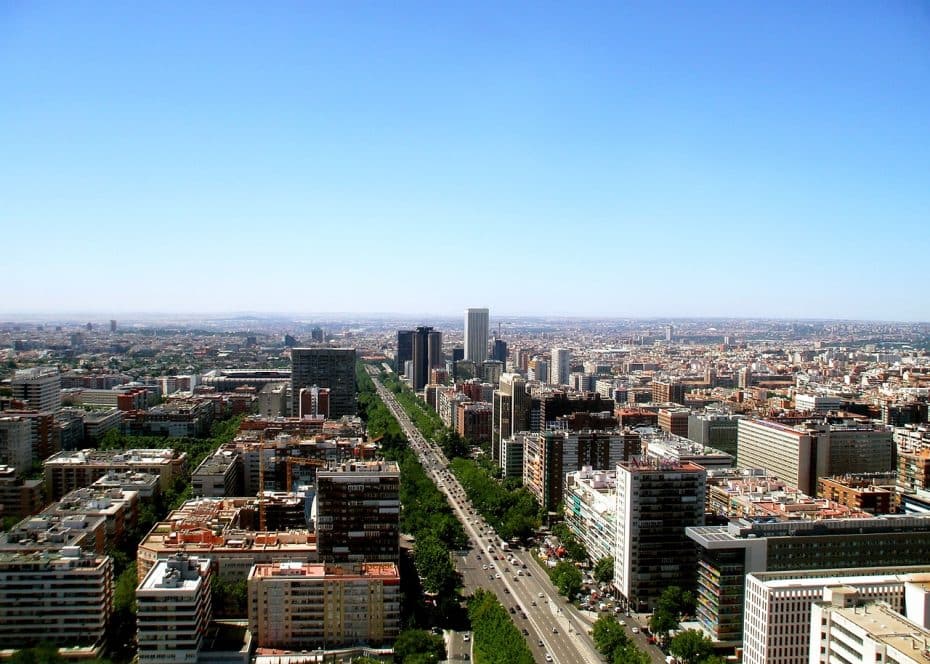
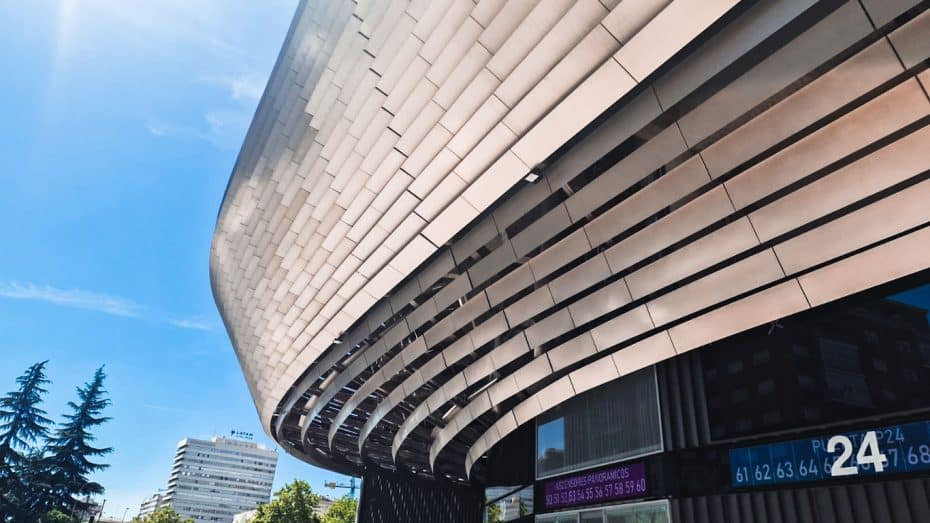
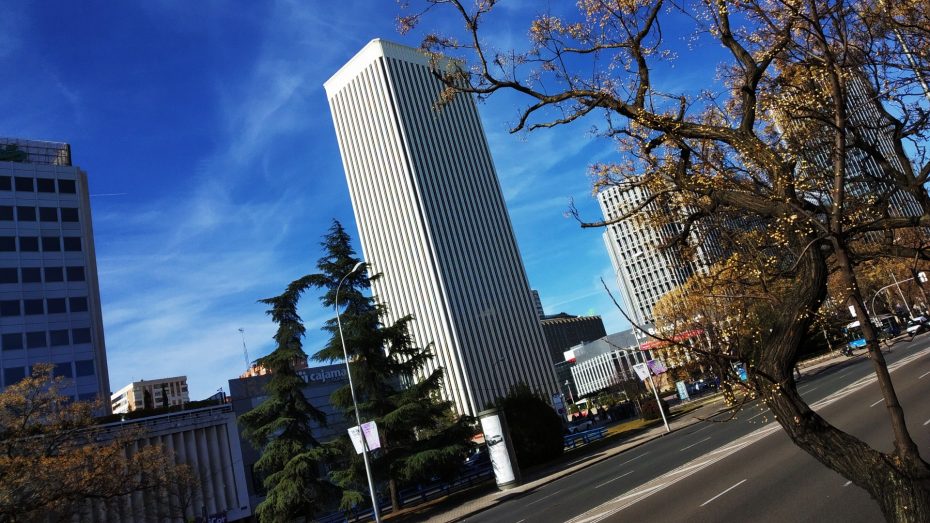
Located near Santiago Bernabéu Stadium and the AZCA District, La Castellana is where business meets pleasure in Madrid
AZCA is a bustling commercial and business district in Madrid that surprisingly boasts an impressive array of nightlife options. Positioned south of Chamartín, this area is bound by major thoroughfares such as Paseo de la Castellana and Calle Orense, making it one of the most accessible neighborhoods in North Madrid.
Historically, AZCA was developed in the mid-20th century, with plans for an American-style modern business center initiated in the 1960s to accommodate offices and high-rise buildings. As a result, the district now presents an intriguing blend of sleek, contemporary architecture that contrasts the traditional Spanish architecture found throughout much of Madrid.
The area is home to notable business landmarks such as the Palacio de Congresos de Madrid (Paseo de la Castellana, 99). It has been a financial hub since its inception. Torre Picasso, Torre Europa, Torre BBVA, and the Leaning Kio Towers famously dominate AZCA’s skyline. These skyscrapers were some of the tallest in Madrid until the ones in the Cuatro Torres Business Area, further north, surpassed them.
This area is located along Madrid’s main artery, Paseo de la Castellana, which stretches from Plaza de Colón to Plaza de Castilla and hosts the famous Santiago Bernabéu Stadium. This massive sports venue has been home to Real Madrid since its completion in 1947. The stadium has received a major facelift in recent years. When it’s not used for premier league football matches, El Bernabéu is used for world-class concerts by stars such as Taylor Swift and Shakira. Find upcoming events in Madrid.
Among the notable establishments in AZCA is El Refugio (Calle de Orense, 22), an atmospheric tapas bar offering a sophisticated ambiance and Spanish fare. For remarkable gastronomy experiences, you will find DiverXO (Calle de Padre Damián, 23), a three-Michelin-starred restaurant helmed by renowned chef David Muñoz. Dance enthusiasts may prefer to explore one of the many clubs in the complex, such as Panda Club Madrid, La Nuit, Posh Club, Fan Club, or Discoteca Faces Latina, all located within a 200-yard radius of each other on Calle Orense and around.
La Castellana’s nightlife scene includes the popular gastropub Mercado de Chamberí (Calle Alonso Cano, 10), which offers local and international dishes in a modern atmosphere.
This area offers excellent transport links with prominent transports hubs such as Nuevos Ministerios (Lines 6, 8, 10 and Cercanías), Plaza de Castilla (Lines 1, 9 &10) and Santiago Bernabéu (Line 10).
Regarding accommodation, La Castellana offers various types of hotels, from luxury to business.


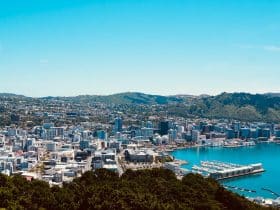
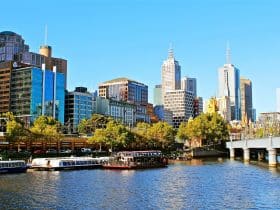
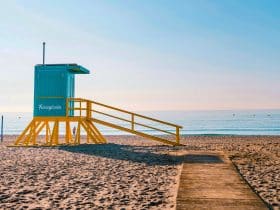
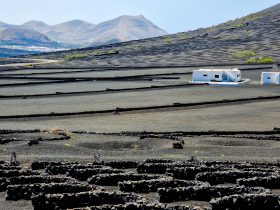
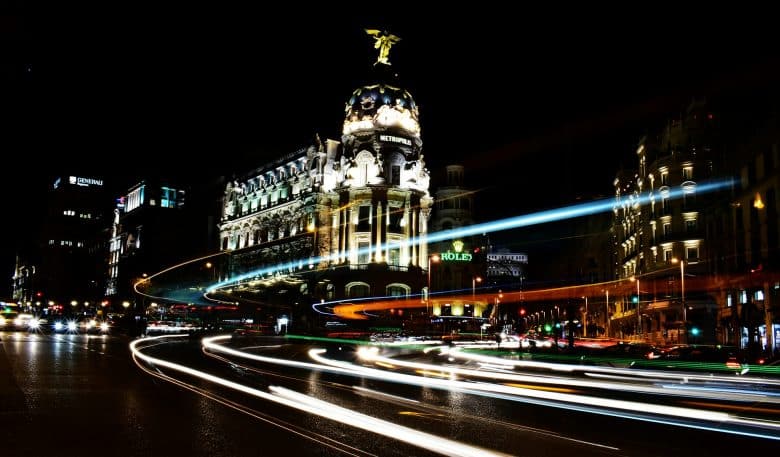

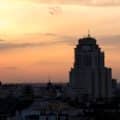
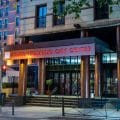
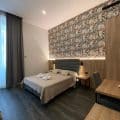
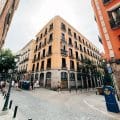


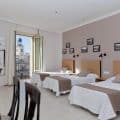
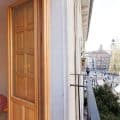
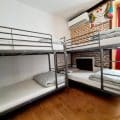
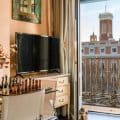
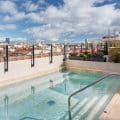
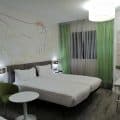
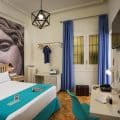
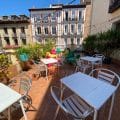
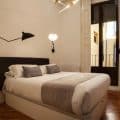
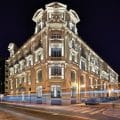

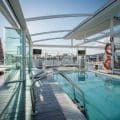
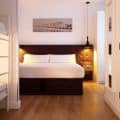
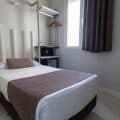

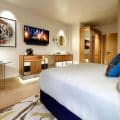
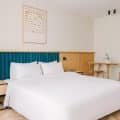

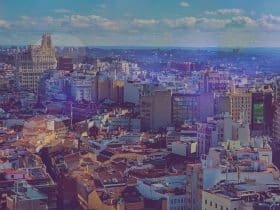
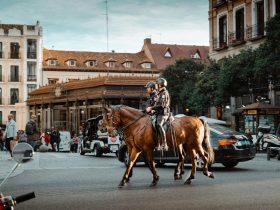

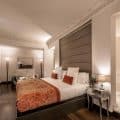


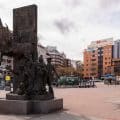

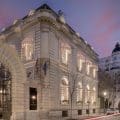
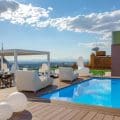
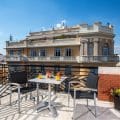
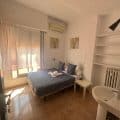
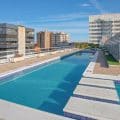

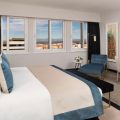

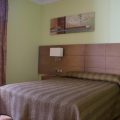
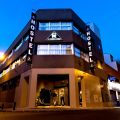
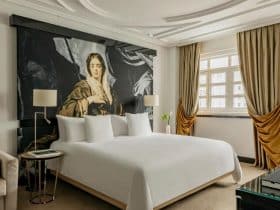
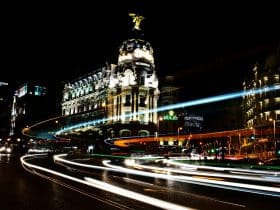
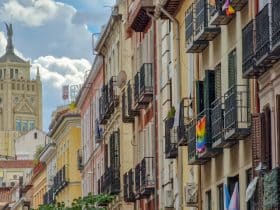

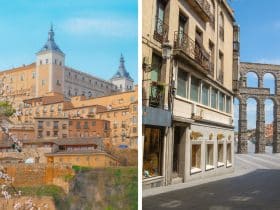
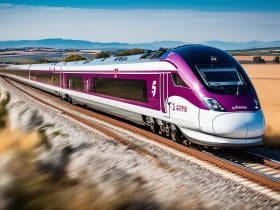
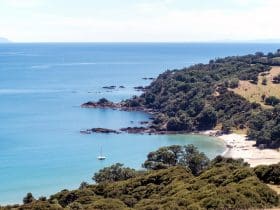

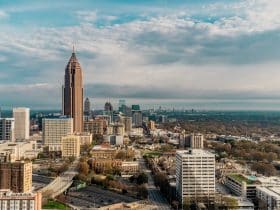









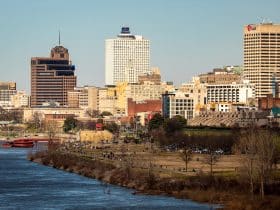
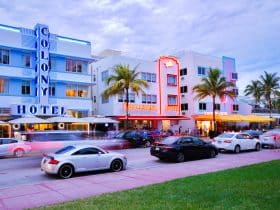
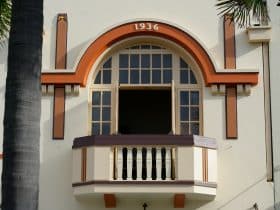
I stayed in Chueca and absolutely loved it!!!